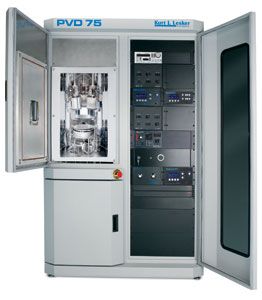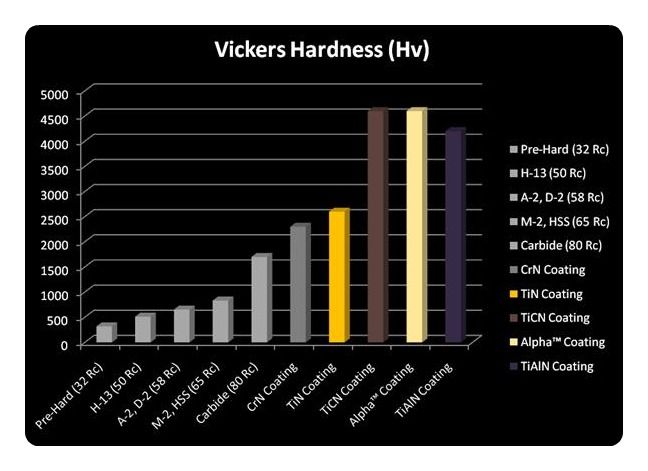PVD coating
PVD coating, also known as PVD coating, is a surface treatment (coat = coat) that can be applied to the surfaces of various products. The primary purpose is to increase resistance and extend the product's durability. The abbreviation PVD comes from the English term Physical Vapor Deposition. In Czech, the term Fyzikální depozice z plynné fáze is used.

How is the treatment performed?
Simply put, it is a process of applying surface material in a very thin layer. There are several methods for performing PVD. Evaporation in a vacuum at temperatures between 150 °C and 500 °C in a special ion chamber. The released particles of material for PVD are ionized and react with the atmosphere inside the chamber, composed of an inert gas (usually Argon) and a reactive gas (usually Nitrogen). They then settle on the surface of the treated object, where they form a thin, continuous, and highly adhesive coating. Other technological processes with the same achieved result include sputtering, electron beam deposition, and pulsed laser deposition. To achieve uniform layer thickness, the treated objects rotate at a uniform speed around several axes.
Most commonly used PVD coating
Among the most commonly used PVD coatings is Titanium coating – Tin. There are also several other commercially used variants of TiN that have been developed in the last ten years. These are Titanium carbon nitride – TiN with carbon, TiCN, further Titanium aluminum nitride – TiN with aluminum, TiAlN or AlTiN, and also combinations of aluminum and carbon. Other widespread PVD surface treatments include CrN coating (based on chromium nitride), ZrN coating (based on Zirconium nitride), or Alpha™ coating – Tin + ZrN.

Result of PVD coating treatments
The benefit of PVD surface treatments is a significant improvement in the properties of the treated product, such as low friction, high hardness, resistance to abrasion and high temperature, resistance to corrosion and acids.




























































































































